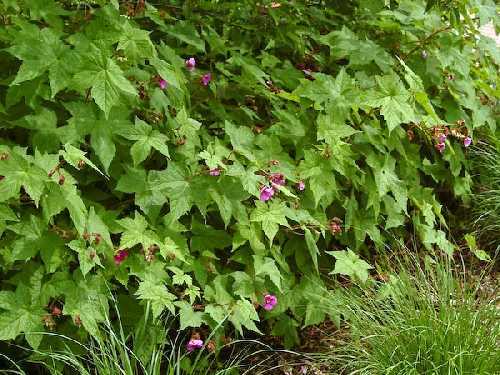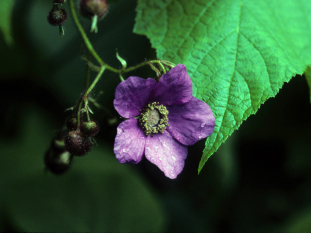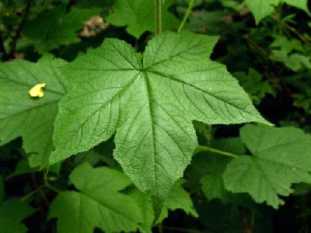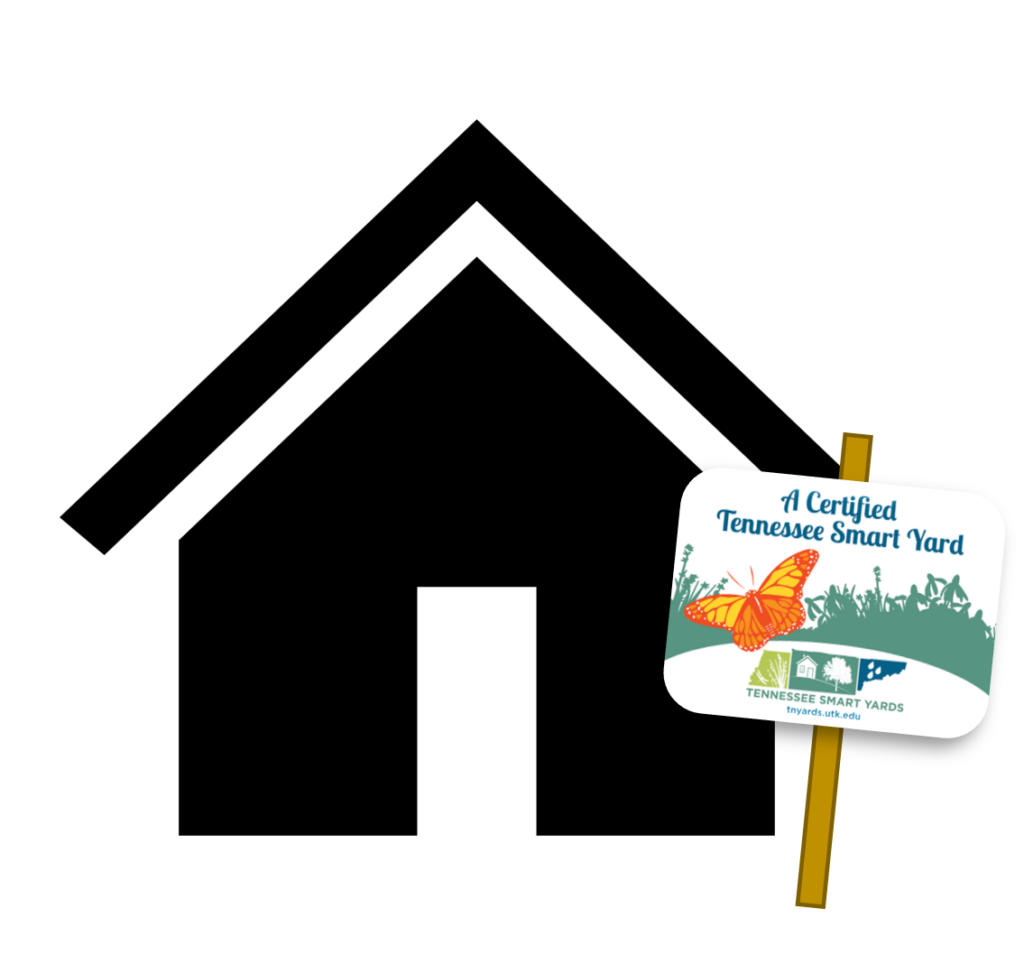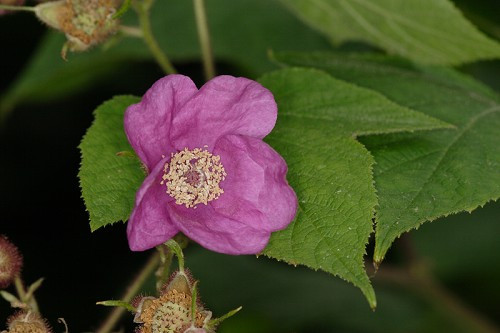
Common Name: Purpleflowering Raspberry, Flowering Raspberry, Fragrant Thimbleberry
Full sun to light shade; moderately wet to medium moisture level; grows in rocky, gravelly or sandy loams and silt loams; prefers moderately acid pH.
3-6 feet height by 4-8 feet spread; blooms in summer; rose purple flowers; fruits are pale dull red to purple in late August through late September.
Growth Rate: Fast. Freely suckers to form mounded colonies.
Maintenance: Infrequent disease and insect problems. Frequent ice and wind damage in winter due to its soft, scarcely woody stems. Needs occasional pruning to remove dead canes, or as an alternative a person can mow the patch to the ground every 5 years and skip one season of fruits. Aggressive suckering habit needs to be monitored.
Propagation: Easy from cuttings, layers and seeds
Native Region: East Tennessee, primarily in the Blue Ridge Province
Deciduous, coarse shrub that is the showiest of the native raspberries, with rose-like flowers nearly 2 inches wide. Canes lack spines or thorns. Fruit is scarcely edible for humans, being dry and mealy but is very popular with songbirds, upland game birds, and large and small mammals. Occurs naturally in damp woodlands, margins of streambeds, and thickets. Very high wildlife value; attracts birds, butterflies and bees.
